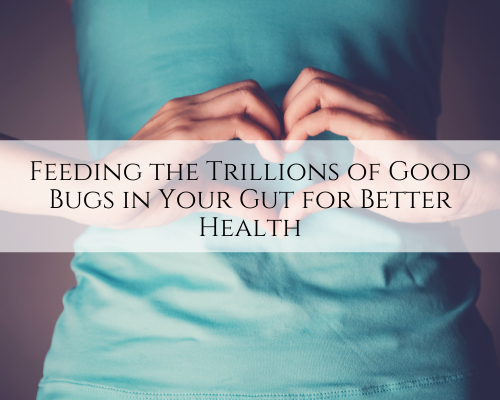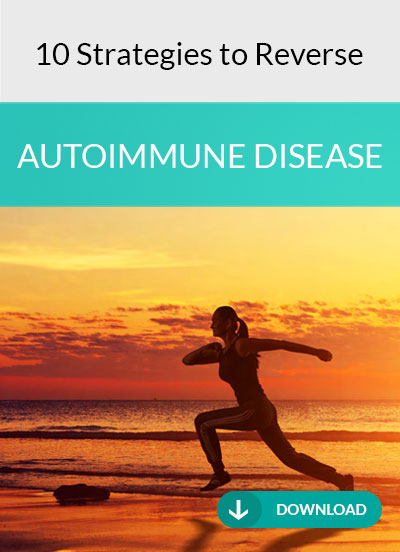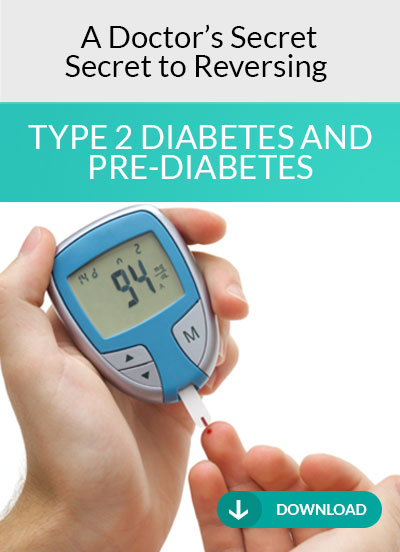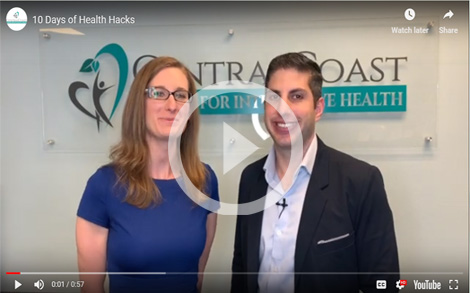What are the Trillions of Good Bugs in Our Body?
The gut microbiome consists of trillions of microorganisms that are known as microbiota, microflora, or microbes, with the beneficial bacteria known simply as “good bugs.” We obtain our microbiome from the birth process – from the birth canal or the skin if born via cesarean section. After that, we are pretty much exposed to microbes everywhere we go. Everyone’s microbial makeup is different – like fingerprints. Over time these microorganisms adapt to the environment, diet, and medications we are exposed to. While we have microbes all over and inside of our bodies, it is the gut that we are focusing on today. The gut contains the largest number, and greatest diversity, of bacteria in the human body.
What is a Gut Microbiome?
The tiny critters that live in our gut, or gut microbes, are hard workers in our intestinal tract. Our gut houses approximately 500 species of bacteria and 100 trillion bugs altogether. They help absorb and synthesize nutrients. How we digest our food relies heavily on our microbiome. In addition, our gut microbes are involved in metabolism, immune regulation, cognitive function, and mood. While we have “good” and “bad” bacteria in our body – it is the balance between these that is important. Diversity is essential and we always want more good bugs than bad.
Good bugs– also known as beneficial bacteria or commensal bacteria. These bugs reside in our gut.
Bad bugs– may be harmless or harmful. They can cause illness, especially when they grow out of control.
A healthy gut has a diverse collection of bacteria. That means different and varied microbial species. This community of good bugs helps to fight off infection by providing immune defense. These bacteria are needed to break down carbohydrates or sugars, balance mood, get rid of toxins, and help our body absorb fatty acids so our cells can grow. Healthy gut bacteria strengthen the intestinal walls. They help keep bad stuff such as undigested food particles and toxins in the gut where it belongs instead of in the bloodstream where it can cause harm.
What is Dysbiosis?
Dysbiosis occurs when the gut microbiome isn’t balanced. Dysbiosis can cause gastrointestinal infections and symptoms such as gas, diarrhea, constipation, bloating, heartburn, and more. Some causes of dysbiosis are eating a nutritionally deficient diet, not eating enough fiber, being overweight, overusing antibiotics, stress, and illness.
Dysbiosis can contribute to “leaky gut,” a weakened gut barrier that allows gut microbes and undigested food particles into the bloodstream. Eating a diet full of processed foods and sweeteners (both refined and artificial) can contribute to a weak, unhealthy microbiome and a damaged gut lining.
Approximately seventy percent of our immunity resides in the gut, so when our microbiome is imbalanced, it can mean profound health problems. Problems with your gut can also signal severe conditions such as heart disease, autoimmune disorders, cancer, diabetes, Alzheimer’s, and Lyme disease.
Symptoms of dysbiosis
- Anxiety
- Bloating
- Candida
- Constipation
- Depression
- Diarrhea
- Eczema
- Fatigue
- Frequent urination
- Heartburn
- Heart diseases
- Insomnia
- Joint pain
- Memory issues
- Mood fluctuation
- Obesity
- Poor focus
- Poor immunity
- Sleep issues
- Stiffness
- Uncontrolled cravings
How Do We Feed Our Good Bugs?
Keeping our microbiome balanced and happy is as easy as feeding the good bugs and starving out the bad bugs. First, the foods we eat every day have a significant impact on our microbiome – different microbes feed on different foods. Some foods encourage harmful bacteria to grow. Other foods encourage good bacteria to grow. So it is a good idea to limit the foods that grow the bad bugs such as processed foods and simple carbohydrates. Examples are bread, crackers, pasta, chips, cookies, baked goods, candy, and added sugar. To maintain a healthy and balanced gut microbiome – it is essential to eat a healthy diet with probiotics and prebiotics.
Build your gut microbiome
- Eat a plant-focused, whole-food diet rich in soluble and insoluble fiber.
- Eat the rainbow of vegetables and fruits, aiming for 9 to 13 servings per day.
- Eat organic whenever possible. Pesticides and genetically modified foods (GMOs) are toxins. This includes meats and proteins. Buy organic, free-range or pasture raised, grass fed and wild options when possible.
- Avoid processed foods, simple carbs, added sugars, artificial sweeteners, food coloring, and trans fats.
- Supplement with probiotics and prebiotics.
- Avoid your food sensitivities or food allergies which might include dairy, eggs, wheat (gluten), soy, peanuts, tree nuts, soy, fish, shellfish, and corn.
- Don’t take antibiotics unless medically necessary.
- Drink lots of water. Hydration helps your body flush out toxins, and your organs run smoothly.
What are Probiotics?
Probiotics are live bacteria or yeasts that produce a health benefit when you take them in high enough amounts. While there are trillions of helpful bacteria in your gut, only a few of them can be given therapeutically and called, “probiotics.” Probiotics help support normal immune function, reduce inflammation, help digestion, and support your gut lining.
Three of the most common probiotics include Saccharomyces boulardii, Lactobacillus species, and Bifidobacterium species.
Probiotics can help:
- Balance gut bacteria
- Boost your immune system
- Support weight loss
- Reduce belly fat
- Prevent diarrhea
- Improve mood
- Support heart health
- Help control irritable bowel syndrome symptoms
- Reduce symptoms of eczema and some allergies
A great way to get more probiotics is by eating fermented foods. Make sure they have live cultures. It is best to choose organic foods that have minimal added sugars.
Dairy-containing Probiotic Foods
- Acidophilus milk
- Buttermilk
- Cheese (aged)
- Cottage cheese
- Sour cream
- Plain active cultured yogurt (no added sugar)
Non-dairy Probiotic Foods
- Fermented meats
- Fermented vegetables
- Kimchi
- Kombucha
- Miso
- Natto
- Pickled vegetables (raw)
- Plain active cultured almond/coconut/soy yogurt (no added sugar)
- Sauerkraut
- Tempeh
You can also take a probiotic supplement with 20 to 50 billion colony-forming CFUs each day for healthy adults and 1 to 10 billion CFUs for healthy children. If supplementing with probiotics, it is good to rotate between the different brands and species of probiotics to create a diverse microbial environment in the gut.
What are Prebiotics?
Prebiotics are the food components that you can’t digest or absorb, but that help your beneficial bacteria grow. Simply put, prebiotics are the foods that your good bugs like to eat. When your good bacteria eat prebiotics from your diet, it promotes your health. Soluble and insoluble fiber from certain plants are common prebiotics. Prebiotics can help your body absorb calcium and help reduce blood sugar spikes.
Good bacteria break down prebiotic foods in the colon and create butyric acid or butyrate, a substance that fuels colon cells, nourishes the gut lining, and feeds good bacteria. After eating prebiotics, good bacteria make butyrate and other short chain fatty acids that promote gut health and can even prevent colon cancer.
Prebiotics that naturally exist in food are:
- Resistant starches and oligosaccharides
- Fructans, including inulin and fructo-oligosaccharide
- Polyphenols and cocoa-derived flavanols
- Galacto-oligosaccharides and trans-galacto-oligosaccharides
Prebiotic foods
- Asparagus
- Banana
- Dandelion greens
- Eggplant
- Endive
- Garlic
- Honey
- Jerusalem artichokes
- Jicama
- Leeks
- Legumes
- Onions
- Peas
- Radicchio
- Whole grains
What Are Postbiotics?
Postbiotics are the bioactive compounds made by good bacteria, which benefit your health. Postbiotics are another part of the equation of how your microbiome works. Postbiotics include short chain fatty acids such as butyrate, which stimulates the production of T cells in your intestines and supports your body’s immune response. Other types of postbiotics increase the production of cytokines which improve immune function and reduce inflammation.
Types of postbiotics include:
- Bacterial lysates
- Cell-free supernatants
- Cell wall fragments
- Enzymes
- Exopolysaccharides
- Lipopolysaccharides
- Short chain fatty acids
- Vitamins
Interested in how best to incorporate probiotics and prebiotics into your diet and lifestyle? Schedule a complimentary 15-minute discovery consultation, and we can get you on the road to balancing your gut microbiome and achieving optimum health.
Board Certified in Integrative Medicine
Certified Functional Medicine Practitioner
Institute for Functional Medicine Certified Practitioner






